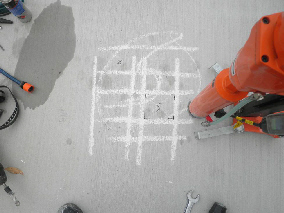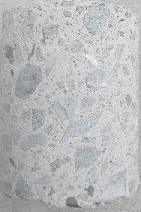Compressive strength (typical 20 to 60 MPa) of cored samples removed from a structure gives an indication of concrete strength. This method is slightly destructive, as cores will need to be removed; however, there are many strong, low-shrink repair products on the market that can backfill the core holes afterwards.
There are a few important factors that need to be considered for compressive strength testing. These include avoiding reinforcement and other services (location with GPR will be necessary), and the number and size of the cores.
.
The images above show an area scanned with GPR prior to core removal. The core was later crushed to determine the cylinder compressive strength.







